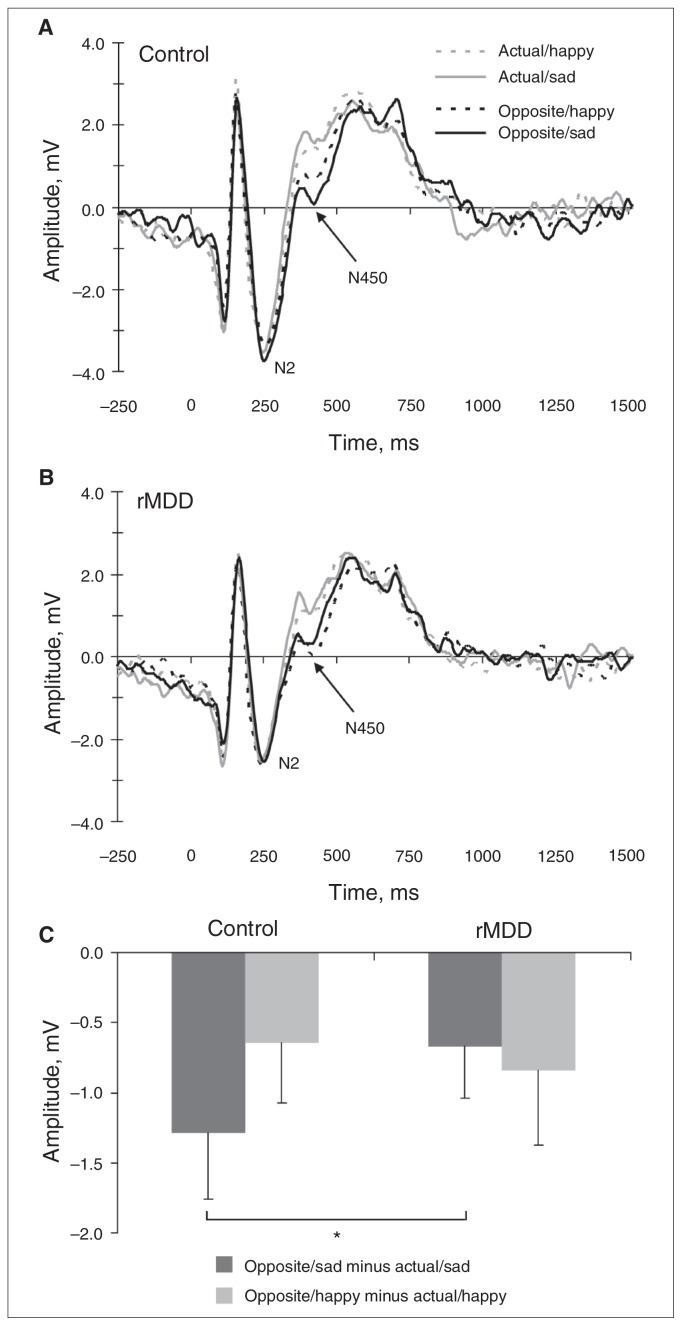Fig. 4.
Target-locked grand mean waveforms at electrode Cz for actual/sad, actual/happy, opposite/sad and opposite/happy trials for the (A) control and (B) remitted major depressive disorder (rMDD) groups. Tick marks on the x axis denote 250 ms increments. (C) Mean (and standard error) difference scores: N450 amplitudes in trials requiring the emotion identification were subtracted from trials requiring cognitive control in response to the emotional stimulus (i.e., opposite/happy minus actual/happy; opposite/sad minus actual/sad) for the control and rMDD groups. Larger (i.e., less negative) difference scores were interpreted as reflecting weaker cognitive control in response to the emotional stimulus. Note that the baseline-corrected data departed from the zero line. This might reflect the use of a fixed interstimulus interval, and might have affected the relative peak amplitudes. However, the 4 conditions showed virtually identical pre-stimulus baseline values; accordingly, the drifting baselines should not have affected between-condition differences.

